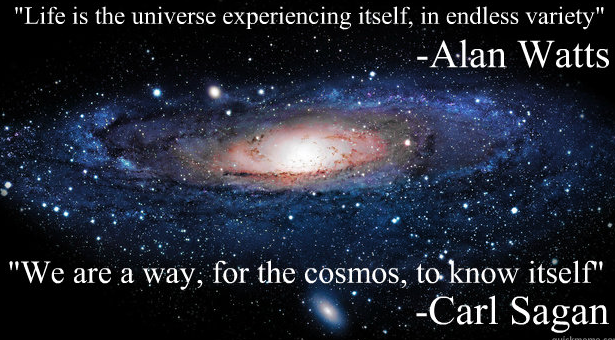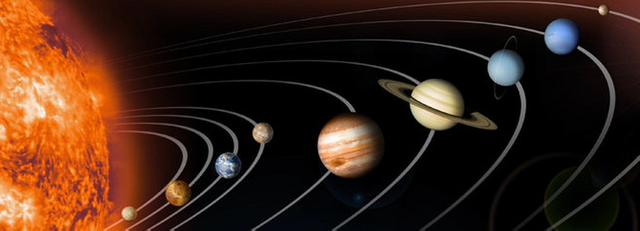Why mathematics is NOT unreasonably effective in describing nature
Usually the argument is being made that mathematics is unreasonably or surprisingly effective in describing the laws of nature, as if the laws of nature are expected to not be simple but instead random or complex. However those laws that have big complexity do not have short mathematical descriptions and therefore they are not referred to as laws...
Hence there is a circular reasoning at work in the statement "nature have surprisingly simple laws", since only simple laws are referred to as laws at all! Also, only simple laws can be described by short elegant equations. A complex, "random" law would have itself as its shortest description and would look like "noise" and be ugly. Of course this noise could be transformed into whatever favorite format desired, for example a string of ones and zeroes, a computer program in your favorite programming language or a big ugly polynomial. The problem is that whatever form it takes it will be big, meaning that its complexity or shortest description size is too big to be considered small or elegant. Obviously where to draw the line between how many bits of information is considered elegant or ugly is a very difficult question and will not be analyzed further here.
Usually in science, particularly in physics, nature is broken up into two parts: the state, X, and the law, L, governing the time evolution of the state.
For example:
Deduction
The initial state X=X(0): the positions (x, y, z), velocities (v_x, v_y, v_z) and masses of all bodies in a solar system at time T=0. This could be coded as a string of ones and zeroes if one wishes and could require arbitrarily many bits to describe. To make the number of bits finite, discretization, with D decimals, can be used. The state will then be denoted X(D). The number of bits in X(D) increases linearly with the number of bodies in the solar system, and can be very large.
The law L: Newtons laws for example. They calculate the state at any time T in either the future or past given the state at T=0. Newtons laws (or any laws) can be encoded as a computer program that for any number of decimals, D, computes the state with D decimals precision. D have to be given as an argument to the program L. No matter how large D is, L can compute X(D)(T) with D decimals precision for any T as long as D is finite. (Also the number of decimals in T must be finite.) The important thing here is that the program L is an exact encoding of Newtons laws and can also be represented as a finite string of ones and zeroes, just like the state X(D). So X(D) can be arbitrarily large the larger the system is, but the law, L, has a finite size.
Now we just have to feed the program, L, and its inputs into a computer. I will use the notation, U, for the computer, which is used in algorithmic information theory (AIT) to denote a "universal Turing machine" (UTM). A universal machine can run any program, and hence simulate any other computing machine. All computers in everyday use are UTM's, except with finite memory.
I will use the notation from AIT <x,y> for the ordered pair of x and y. For example if x and y are strings of bits, then <x,y> is a string of bits containing x and y and a way to tell them apart.
The UTM takes <P, I> as argument, where P is a program and I an input to the program. In our case the program is L and the input is <X(D), D, T>
So the state at time T, X(D)(T) is:
U(<L, <X(D), D, T>>)
Here we can see the two part description, inside the argument to U, of the "totality" <law, initial state>, where L (a finite number of bits) is the laws governing the system, and X is the initial state of the system. U here plays the role of our chosen "language". You can always describe information in infinitely many equivalent ways, in this case in different computer languages, U, or intuitively "languages".
What about the precision D? If we accept that a state can have arbitrary precision, then <X,T> have virtually infinite information, but most physicists believe that a finite volume can only have a finite amount of information in bits because of a shortest length called the Planck length, similarly there is a Planck time. So D will then naturally have a size approx -log10(planck length) and analogously for time. From now on I will assume that D is given in advance for example by the Planck length/time so that <X,T> is always a finite string of ones and zeroes. The state at X(T) will then be:
U(<L, <X, T>>) = X(T)
Remember that X is just X(0), the initial state! To know X(T) for any T, we just need to know the following: The UTM or language, U, the law, L, and an initial state X. From those three parts we can then deduce the systems state <X(T), T> for all future and past T. Let us write down these three parts:
<language, law, initial state>
<U, L, X>
This is just a finite string of ones and zeroes describing the "totality" of the system, also including the language, U, i.e. rules for how to interprate and process the information. The information can always be encoded in at least one way as a string of ones and zeroes, but can obviously have arbitrarily many alternative forms (roman letters, cave paintings...) Note that for complex systems X contains very much information, but U and L very little in comparison. (Hence the title of this article)
Induction
Now we have described the deduction process, i.e. how to deduce all future (and past) states of a solar system using an initial state and a law. This principle can be generalized to most science in my opinion. Now, lets run the entire process in reverse, lets assume that we see states of the system, X(T1), X(T2), X(T3) for different times T1, T2... Now we want to discover the law, L, so that:
U(<L, <X(0), Ti>>) = X(Ti)
Obviously there is no simple way of doing this, which is called the induction process, how we discover laws from finite observations of a systems state. Any such law is always a guess, since we only have finite information to make infinite generalizations so to speak, but the "best" law can still be seen as a shortest input to U, <L,<X,Ti>>, that accurately reproduces the observed states, X(Ti). Of course, at first one didn't even know that the heavenly bodies motion could be predicted based just on their positions and velocities at one point in time, that was also something to be discovered, in parallel with inventing calculus (a language?).
To generalize, induction, or to discover a law is simply to find a two-part description of the observed data. Let the observed data be O, then we want to find some L and some X so that <L, X> is as short as possible and:
U(<L, X>) = O
If L contains few bits of information and X many, then by definition, we call L a law, and X is simply "the leftovers" or the input that we couldn't compress. In the above example X corresponded to the (initial) state of a solar system.
Another example: Lets say you look at a tapestry, T, and you see that pictures repeat in a pattern. Then X=the pictures. and L=the way in which they repeat. In this example L is obviously a very simple rule that can be described with a very few number of bits, but the pictures being repeated can be arbitrarily complex, so we call them X, we don't want to call them a law - but the pictures nonetheless exist! The entirety of the tapestry are described by <L, X>, both L and X are necessary to reproduce the tapestry.
In analogy, when talking about the universe it is described by both a law, L, and an initial state, X. The universe is <L, X>, but X is large and complex, so we sweep it under the rug and only talk about L, because it is the only thing small and simple enough to talk about! This is why it is not surprising that "laws are simple", since only simple things can be given a short description, and by definition we refer to them as laws (this issue also pops up in mathematics in relation to Gödel's incompleteness theorem, but that is another post). In fact we do not know if X is complex or incompressible, but until we find out we will not refer to X as a "law", just a very complex thing in itself.




Not all important mathematics can be stated in a simple manner. These days it is becoming more and more complex and it is hard for any mathematician to understand but a small portion of mathematics.
Well done. I think that if kids can now where mathematics fit into there everyday life, they will enjoy it a lot more.
Well written.. Upvoted
Thank you dear for upvoting my post :)
"Of course this noise could be transformed into whatever favorite format desired", this will hold true of any noise we can experience, as we only can experience noise that we sense and then express to our conscience mind. This would be done by some neurons in your brain firing or not firing (0 or 1). It's not impossible for events or "things" to exist that cannot be expressed this way, and hence may be outside of our conscience observed world.
Shortly put, anything humans can experience can be written in mathematical expressions, but that doesn't necessary mean that everything can be. We live in a holographic projection of our experiences ... and anything inside these holograms can be expressed mathematically.
Congratulations @rndness222! You have completed some achievement on Steemit and have been rewarded with new badge(s) :
Click on any badge to view your own Board of Honor on SteemitBoard.
For more information about SteemitBoard, click here
If you no longer want to receive notifications, reply to this comment with the word
STOPDon't miss my next post:
An introduction to algorithmic information theory PART 1